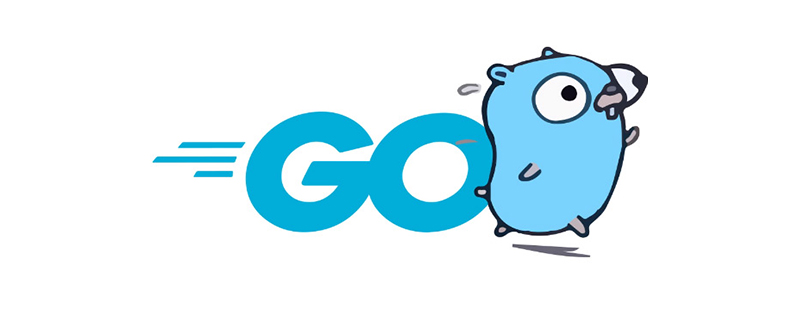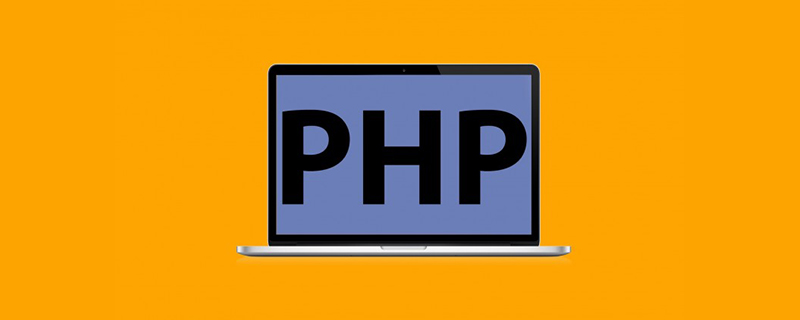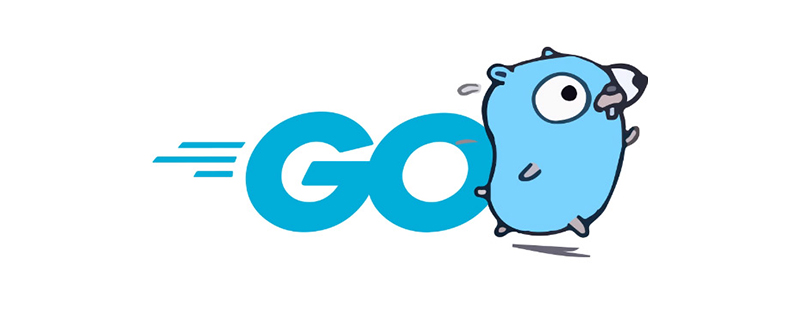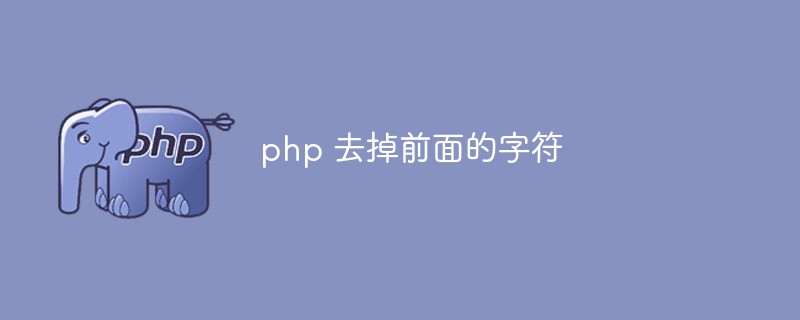 Backend Development
Backend Development PHP Tutorial
PHP Tutorial The difference between characters and bytes in PHP and detailed graphic explanation of string and byte conversion
The difference between characters and bytes in PHP and detailed graphic explanation of string and byte conversionCharacters in php are abstract entities that can be represented using a variety of different character schemes or code pages. A byte is a unit for transmitting information over a network (or storing information on a hard drive or in memory). This article also introduces examples of string and byte conversion in PHP through examples. Friends who are interested should take a look together
Characters:
Characters are abstract entities that can be represented using many different character schemes or code pages. For example, Unicode UTF-16 encoding represents characters as a sequence of 16-bit integers, while Unicode UTF-8 encoding represents the same characters as a sequence of 8-bit bytes. The common language runtime uses Unicode UTF-16 (Unicode Transformation Format, a 16-bit encoding) to represent characters.
In php, under UTF-8 encoding, a Chinese character occupies 3 characters, and under gbk encoding, it only occupies 2 characters.
Byte (Byte):
Byte is to transmit information through the network (or store information on the hard disk or memory) The unit.
Application:
If the table in the database is UTF8 encoded, and the field is set to a maximum of 10 characters, the maximum storage length is eg: 'I am in 1'
Let’s look at the PHP string and byte conversion example
<?php
/**
* byte数组与字符串转化类
*/
class Bytes {
/**
* 转换一个String字符串为byte数组
* @param $str 需要转换的字符串
* @param $bytes 目标byte数组
* @author Zikie
*/
public static function getBytes($string) {
$bytes = array();
for($i = 0; $i < strlen($string); $i++){
$bytes[] = ord($string[$i]);
}
return $bytes;
}
/**
* 将字节数组转化为String类型的数据
* @param $bytes 字节数组
* @param $str 目标字符串
* @return 一个String类型的数据
*/
public static function toStr($bytes) {
$str = '';
foreach($bytes as $ch) {
$str .= chr($ch);
}
return $str;
}
/**
* 转换一个int为byte数组
* @param $byt 目标byte数组
* @param $val 需要转换的字符串
*
*/
public static function integerToBytes($val) {
$byt = array();
$byt[0] = ($val & 0xff);
$byt[1] = ($val >> 8 & 0xff);
$byt[2] = ($val >> 16 & 0xff);
$byt[3] = ($val >> 24 & 0xff);
return $byt;
}
/**
* 从字节数组中指定的位置读取一个Integer类型的数据
* @param $bytes 字节数组
* @param $position 指定的开始位置
* @return 一个Integer类型的数据
*/
public static function bytesToInteger($bytes, $position) {
$val = 0;
$val = $bytes[$position + 3] & 0xff;
$val <<= 8;
$val |= $bytes[$position + 2] & 0xff;
$val <<= 8;
$val |= $bytes[$position + 1] & 0xff;
$val <<= 8;
$val |= $bytes[$position] & 0xff;
return $val;
}
/**
* 转换一个shor字符串为byte数组
* @param $byt 目标byte数组
* @param $val 需要转换的字符串
*
*/
public static function shortToBytes($val) {
$byt = array();
$byt[0] = ($val & 0xff);
$byt[1] = ($val >> 8 & 0xff);
return $byt;
}
/**
* 从字节数组中指定的位置读取一个Short类型的数据。
* @param $bytes 字节数组
* @param $position 指定的开始位置
* @return 一个Short类型的数据
*/
public static function bytesToShort($bytes, $position) {
$val = 0;
$val = $bytes[$position + 1] & 0xFF;
$val = $val << 8;
$val |= $bytes[$position] & 0xFF;
return $val;
}
}
?>
Summary: The above is the entire content of this article, I hope it will be helpful to everyone's study.
Related recommendations:
Detailed explanation of PHP file upload processing case
Simple case of PHP linked list operation
phpDatabase cache implementation ideas
The above is the detailed content of The difference between characters and bytes in PHP and detailed graphic explanation of string and byte conversion. For more information, please follow other related articles on the PHP Chinese website!
 php怎么将16进制字符串转为数字Oct 26, 2021 pm 06:36 PM
php怎么将16进制字符串转为数字Oct 26, 2021 pm 06:36 PMphp将16进制字符串转为数字的方法:1、使用hexdec()函数,语法“hexdec(十六进制字符串)”;2、使用base_convert()函数,语法“bindec(十六进制字符串, 16, 10)”。
 php怎么将字符串转换成小数Mar 22, 2023 pm 03:22 PM
php怎么将字符串转换成小数Mar 22, 2023 pm 03:22 PMPHP 是一门功能强大的编程语言,广泛应用于 Web 开发领域。其中一个非常常见的情况是需要将字符串转换为小数。这在进行数据处理的时候非常有用。在本文中,我们将介绍如何在 PHP 中将字符串转换为小数。
 golang怎么检测变量是否为字符串Jan 06, 2023 pm 12:41 PM
golang怎么检测变量是否为字符串Jan 06, 2023 pm 12:41 PM检测变量是否为字符串的方法:1、利用“%T”格式化标识,语法“fmt.Printf("variable count=%v is of type %T \n", count, count)”;2、利用reflect.TypeOf(),语法“reflect.TypeOf(变量)”;3、利用reflect.ValueOf().Kind()检测;4、使用类型断言,可以对类型进行分组。
 php 字符串长度不一致怎么办Feb 07, 2023 am 09:58 AM
php 字符串长度不一致怎么办Feb 07, 2023 am 09:58 AMphp字符串长度不一致的解决办法:1、通过mb_detect_encoding()函数查看字符串的编码方式;2、通过mb_strlen函数查看具体字符长度;3、使用正则表达式“preg_match_all('/[\x{4e00}-\x{9fff}]+/u', $str1, $matches);”剔除非中文字符即可。
 go语言怎么删除字符串中的空格Jan 17, 2023 pm 02:31 PM
go语言怎么删除字符串中的空格Jan 17, 2023 pm 02:31 PM删除方法:1、使用TrimSpace()函数去除字符串左右两边的空格,语法“strings.TrimSpace(str)”;2、使用Trim()函数去除字符串左右两边的空格,语法“strings.Trim(str, " ")”;3、使用Replace()函数去除字符串的全部空格,语法“strings.Replace(str, " ", "", -1)”。
 php怎么将字符串转为布尔类型Jul 01, 2021 pm 06:36 PM
php怎么将字符串转为布尔类型Jul 01, 2021 pm 06:36 PM转换方法:1、在转换变量前加上用括号括起来的目标类型“(bool)”或“(boolean)”;2、用boolval()函数,语法“boolval(字符串)”;3、用settype()函数,语法“settype(变量,"boolean")”。
 php字符串函数学习:怎么去掉前面的字符Mar 20, 2023 pm 02:33 PM
php字符串函数学习:怎么去掉前面的字符Mar 20, 2023 pm 02:33 PM在开发PHP应用程序时,有时我们需要去掉字符串前面的某些特定字符或者字符串。在这种情况下,我们需要使用一些PHP函数来实现这一目标。本文将介绍一些PHP函数,帮助您轻松地去掉字符串前面的字符或字符串。
 php字符串部分乱码怎么办Jan 20, 2023 am 10:18 AM
php字符串部分乱码怎么办Jan 20, 2023 am 10:18 AMphp字符串部分乱码的解决办法:1、使用“mb_substr(strip_tags($str),0,-1,'UTF-8');”截取字符串;2、使用“iconv("UTF-8","GB2312//IGNORE",$data)”转换字符集即可。


Hot AI Tools

Undresser.AI Undress
AI-powered app for creating realistic nude photos

AI Clothes Remover
Online AI tool for removing clothes from photos.

Undress AI Tool
Undress images for free

Clothoff.io
AI clothes remover

AI Hentai Generator
Generate AI Hentai for free.

Hot Article

Hot Tools

Dreamweaver Mac version
Visual web development tools

SAP NetWeaver Server Adapter for Eclipse
Integrate Eclipse with SAP NetWeaver application server.

Atom editor mac version download
The most popular open source editor

VSCode Windows 64-bit Download
A free and powerful IDE editor launched by Microsoft

SublimeText3 Chinese version
Chinese version, very easy to use





